Introduction: Pinehurst No. 2 Course Overview
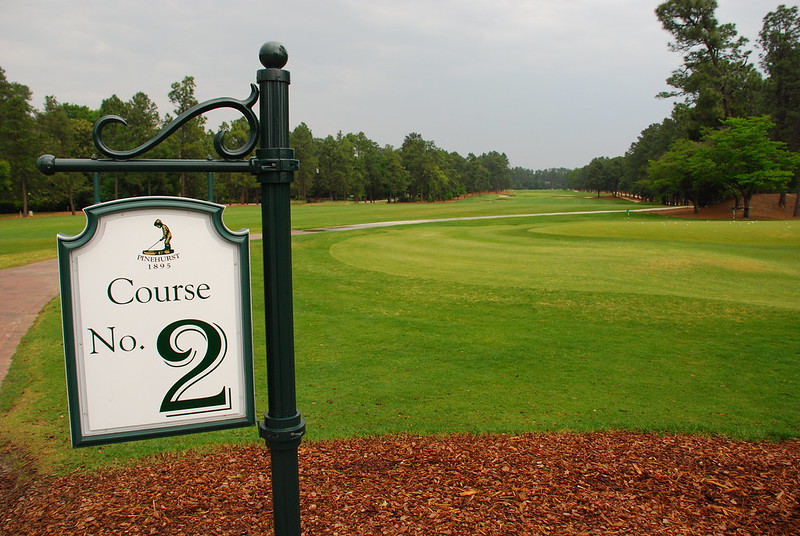
Welcome to our comprehensive Pinehurst No. 2 course overview and strategy guide. Designed by the legendary Donald Ross in 1907, Pinehurst No. 2 has hosted more single golf championships than any other course in America. It’s a place where champions are made, with multiple U.S. Open tournaments, including the back-to-back men’s and women’s events in 2014, and future championships scheduled through 2047. Our Pinehurst No. 2 course overview and strategy guide offers a detailed hole-by-hole breakdown and strategic insights to help you master this iconic course and experience its storied legacy.
A Brief History
Pinehurst No. 2 is the crown jewel of Pinehurst Resort, located in the heart of North Carolina. Founded by James Walker Tufts in the late 19th century, Pinehurst quickly became a premier golfing destination. The course itself has undergone several renovations to preserve and enhance Ross’s original vision, including notable work by R.T. Jones in 1974 and a significant restoration by Bill Coore and Ben Crenshaw in 2010. This restoration returned the course to its roots, with exposed sandy areas and natural contours that challenge golfers to this day.
Key Strategies for Pinehurst No. 2
Pinehurst No. 2 is renowned for its crowned greens, often compared to inverted saucers, which create some of the most challenging pin locations in the game. Shots that land near the edges of these greens are likely to roll off into tricky collection areas, so aim for the center of the green whenever possible. To navigate these challenges, mastering the bump and run shot will be essential, especially around the greens where tight lies are common. Remember, patience and a strategic approach are key—don’t be discouraged if the course’s design seems to work against you; it’s all part of the unique Pinehurst experience.
Holes to Watch For
Among the many memorable holes at Pinehurst No. 2, a few stand out as particular favorites. The 5th hole, a par-5 with a daunting approach to a well-protected green, is often cited as a classic test of risk and reward. The 16th hole, a par-4 with a sharp dogleg and a challenging green, demands precision off the tee and on the approach. And, of course, the 18th hole, where Payne Stewart famously clinched the 1999 U.S. Open, is a fitting finale that encapsulates the drama and beauty of this iconic course.
As you prepare to play Pinehurst No. 2, embrace the history, relish the challenge, and enjoy the opportunity to walk in the footsteps of legends. This is more than just a round of golf—it’s an experience that will stay with you long after the final putt drops.
Strategy Play Guide: Pinehurst No. 2
Hole 1 – Par 4
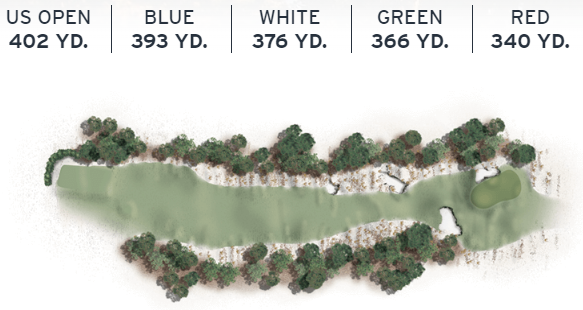
As you step onto the first tee, breathe in the charm of this classic Donald Ross design. This opening hole offers ample space for your drive, inviting you to find your rhythm. Aim for the center of the fairway and prepare for a mid-iron approach to a domed green. While this hole eases you into your round, remember that the green can be punishing—misplaced shots may roll away from the pin, so precision is key.
Hole 2 – Par 4
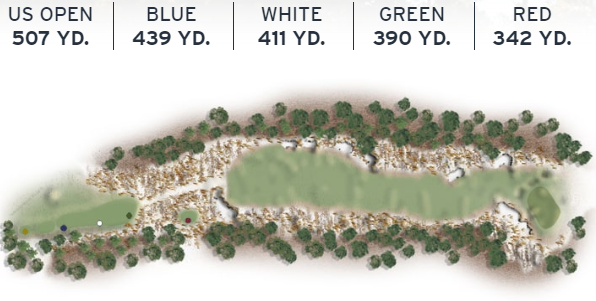
The second hole quickly ramps up the challenge, having averaged 4.5 strokes during the 2005 U.S. Open. A drive favoring the left side of the fairway sets up a better angle into this angled green, which is heavily guarded by a deep bunker on the front right. The severe slopes on the green require careful consideration on your approach; be mindful not to short-side yourself and leave a tricky up-and-down.
Hole 3 – Par 4
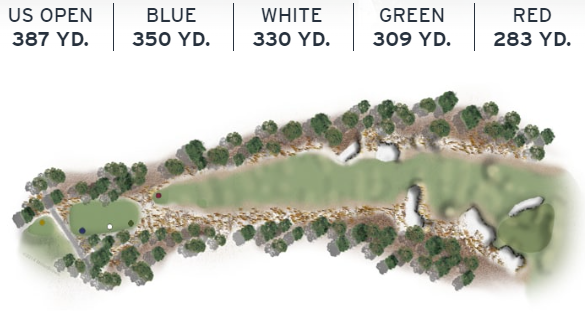
Welcome to a scoring opportunity! This short par 4 tempts players to drive the green but requires a cautious approach. Lay up short of the right-side bunker with a long iron, then approach a well-protected elevated green. Missing the green leaves a challenging recovery, especially if your ball finds the back slope. Keep an eye out for the historic Dornoch Cottage on your left—an homage to the course’s storied past.
Hole 4 – Par 4
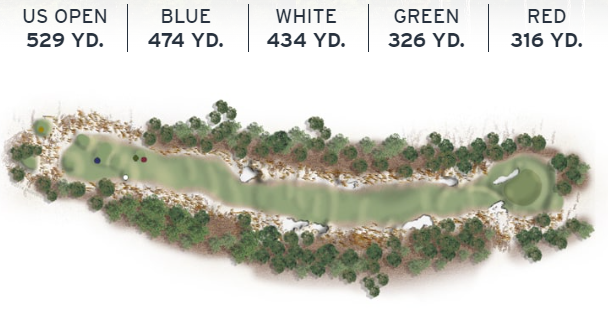
Here lies a quintessential Ross design that plays longer than its yardage suggests. The downhill tee shot favors the left side of the fairway, allowing gravity to assist your drive. Be prepared for a long approach to a wide but narrow green that features a false front. With bunkers lurking on both sides, an accurate long iron is essential to avoid trouble.
Hole 5 – Par 5
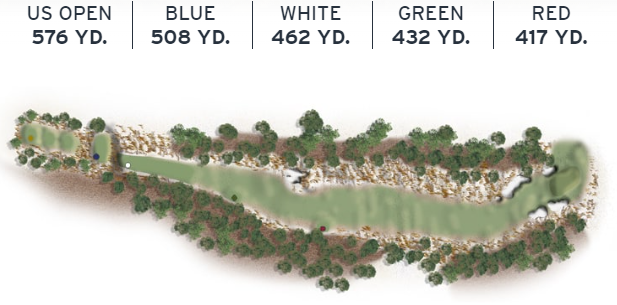
This reachable par 5 invites risk and reward. A drive to the right side of the fairway is crucial, as it slopes leftward. Those daring enough may attempt to reach the green in two, but the slant of the fairway makes this a challenging prospect. Notably, during the 2014 Men’s U.S. Open, Martin Kaymer hit a remarkable 7-iron from 202 yards out of the wire grass to make eagle and return to -10 for the championship. If laying up, a well-placed wedge into the elevated green is key, as misdirected shots to the left can lead to a daunting up-and-down.
Hole 6 – Par 3
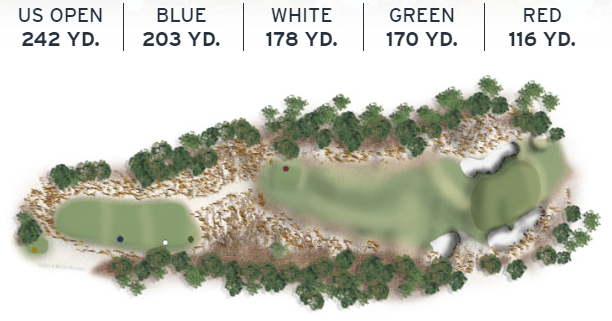
As the first par 3 on the course, this hole packs a punch at 242 yards from the US Open tees. The elevated green can deceive, as its back-to-front slope will repel short or poorly struck shots. Ensure you have enough club to reach the putting surface, especially if the pin is tucked on the right side where the deep bunker awaits. Par here is a solid score, so focus on your accuracy.
Hole 7 – Par 4
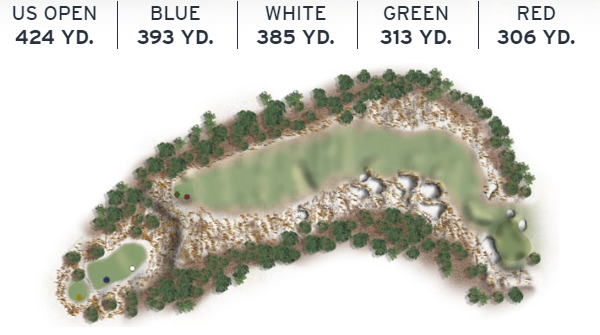
Take a breath; the seventh hole offers a brief respite amidst a tough stretch. This sharp dogleg right requires strategic placement off the tee. Aim for the left-center of the fairway to avoid the deep bunkers on the right. Your approach shot to the green, sloping from back to front, demands precision, particularly if the pin is tucked toward the back.
Hole 8 – Par 4
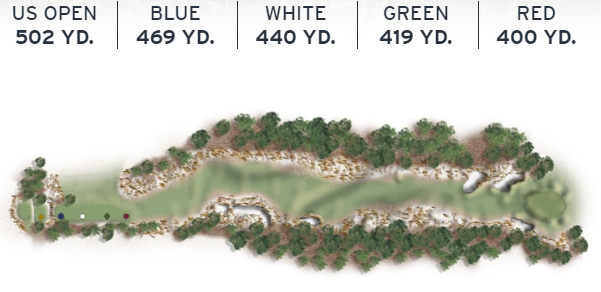
Although classified as a par 4 for the U.S. Open, this hole challenges players with its undulating fairway. A strong tee shot leaves you a mid-iron approach, but avoid going left or long, as the green slopes dramatically and can leave you 20-30 yards off the putting surface. Executing a precise approach is vital to secure a good score.
Hole 9 – Par 3
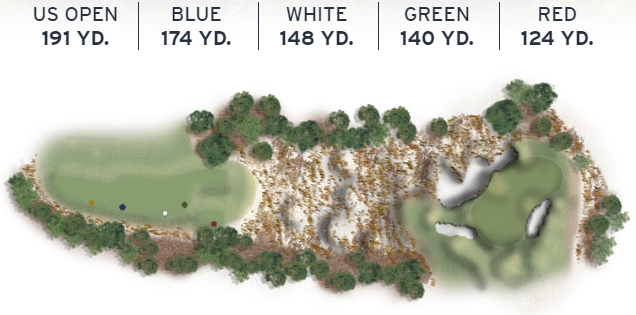
The shortest hole on the course may look innocuous, but it hides its challenges. Precision is paramount, as a well-placed shot is crucial to navigate the two-tiered green. Avoid the deep bunker in front and the slopes that can lead to trouble on the left. Club selection is critical; choose wisely to ensure your shot lands safely on the putting surface.
Hole 10 – Par 5
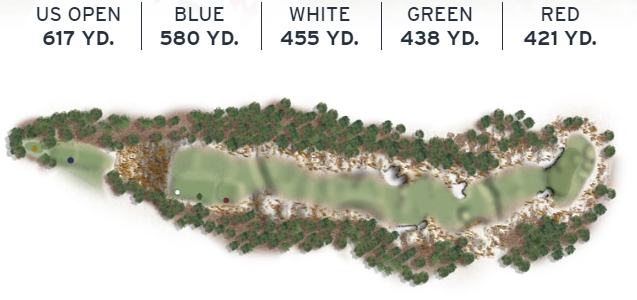
At 617 yards from the US Open tees, the longest hole on the course presents a formidable challenge. Players may be tempted to reach the green in two, but multiple bunkers await on the back half. A solid drive followed by a well-placed lay-up leaves an ideal approach shot. Focus on positioning your third shot to tackle the raised green, where a well-placed shot can yield birdie opportunities.
Hole 11 – Par 4
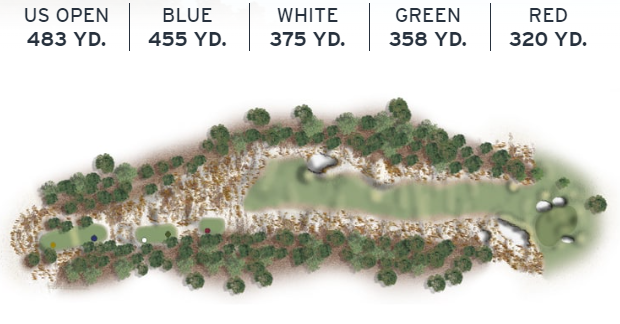
This straightforward par 4 invites you to trust your drive down the ample fairway. However, the left and right borders are lined with notorious Pinehurst waste areas, ready to catch errant shots. Aim for the right-center of the green to avoid the trouble lurking on the left. Consider the pin position carefully; left placements can bring the front bunkers into play.
Hole 12 – Par 4
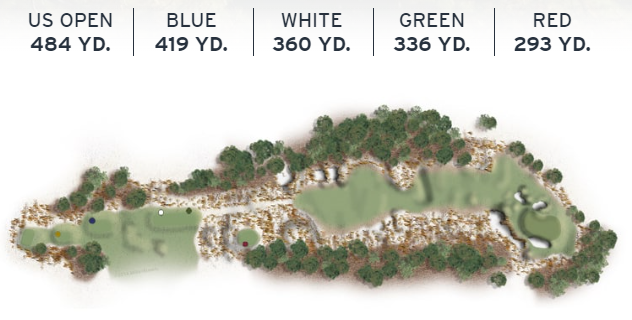
A subtle dogleg right requires accuracy off the tee. The sandy areas lining both sides will punish wayward shots, so aim for the left-center of the fairway. The green, shaped like a bean, presents a tricky target with its drop-off behind. Any approach missing left can lead to a challenging recovery, so prioritize distance control to ensure you leave yourself an easier putt.
Hole 13 – Par 4
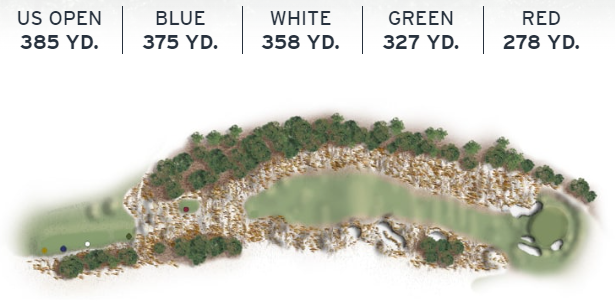
This classic Ross hole allows for creative play. The dogleg right invites a long iron or fairway wood off the tee, but be prepared for an uphill approach shot that can be daunting. Focus on hitting the green, as anything short can lead to a difficult up-and-down. Embrace the challenge, as this hole exemplifies the thoughtfulness of Ross’s design.
Hole 14 – Par 4
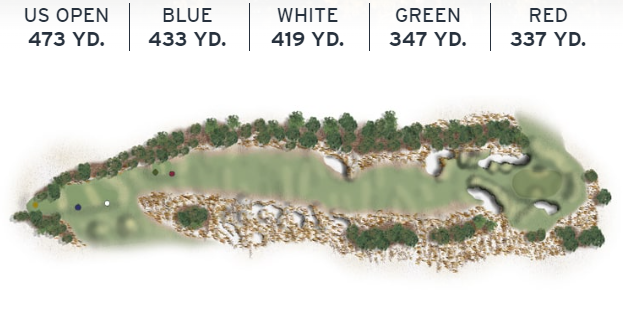
Your tee shot here demands a rightward shape to avoid the fairway bunkers on the left. This scenic hole features a crowned green that slopes significantly from back to front. Approach shots missing to the right can lead to tricky recovery shots. Aiming for the front of the green is often the best strategy, as it will leave you with a manageable putt, regardless of the pin placement.
Hole 15 – Par 3
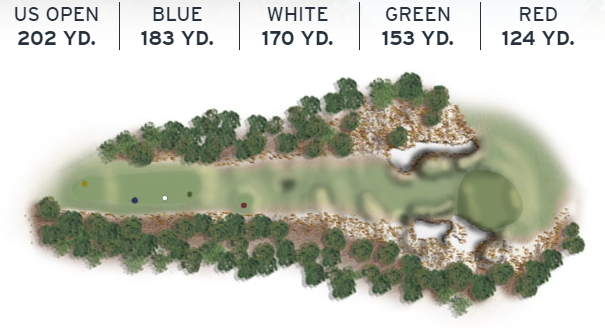
This long par 3 tests your accuracy and club selection. The narrow green, recently renovated to reflect its original size, places a premium on a well-struck tee shot. Favor the front portion of the green to avoid the challenging up-and-downs from behind. Missing right into the bunker can lead to trouble; thus, focus on precision to secure par.
Hole 16 – Par 5
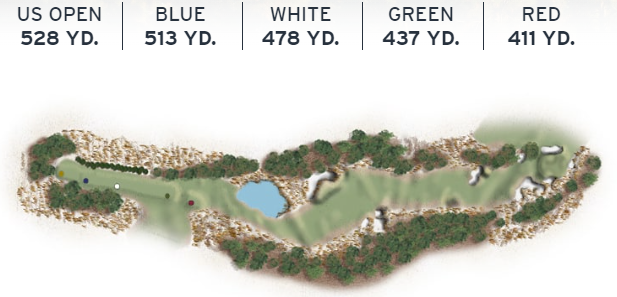
Although this hole plays as a par 4 during the U.S. Open, its par 5 designation for resort play allows for strategic play. Avoid the hidden bunker on the left side after a solid tee shot, positioning yourself well for the second shot. The green slopes sharply from back to front, making it crucial to land your approach in the right section for an easier putt.
Hole 17 – Par 3
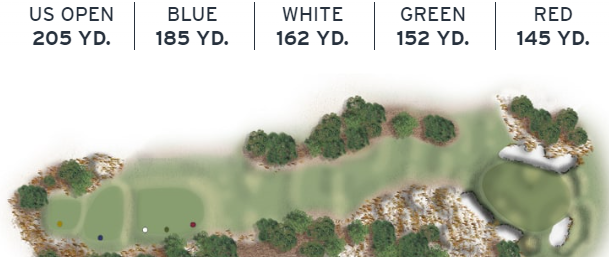
As you approach the 17th, prepare for a pivotal moment in your round. This par 3 offers a larger target compared to the previous holes, but caution is warranted. The sharp drop on the front of the green can be deceptive, especially with a right-side hole location behind the large bunker. This hole played a crucial role in both the 1999 and 2005 U.S. Opens—Payne Stewart made a dramatic birdie here in 1999 to take the lead, while Michael Campbell sealed his victory with a birdie in 2005. Trust your swing and select your club wisely to set yourself up for a successful finish.
Hole 18 – Par 4
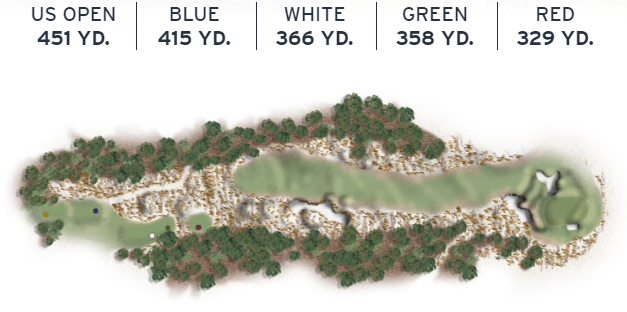
The iconic final hole awaits! With memories of Payne Stewart’s dramatic victory lingering, your drive must avoid the deep bunker on the right. A well-placed shot leaves a mid-iron into a two-tiered green, where precision is paramount. The greenside bunker on the right adds to the challenge; focus on your approach to finish your round on a high note.
Experience Premium Golf Travel: Comprehensive Pinehurst No. 2 Insights and Custom Itineraries
If you enjoyed this Ultimate Playbook, imagine what we can do for your entire golf trip. Our bespoke services offer comprehensive course overviews and detailed hole-by-hole breakdowns, just like this one, for every course you play. Partner with us for your next golf adventure and experience custom-tailored insights that enhance every round. Contact us today to start planning your perfect golf getaway!